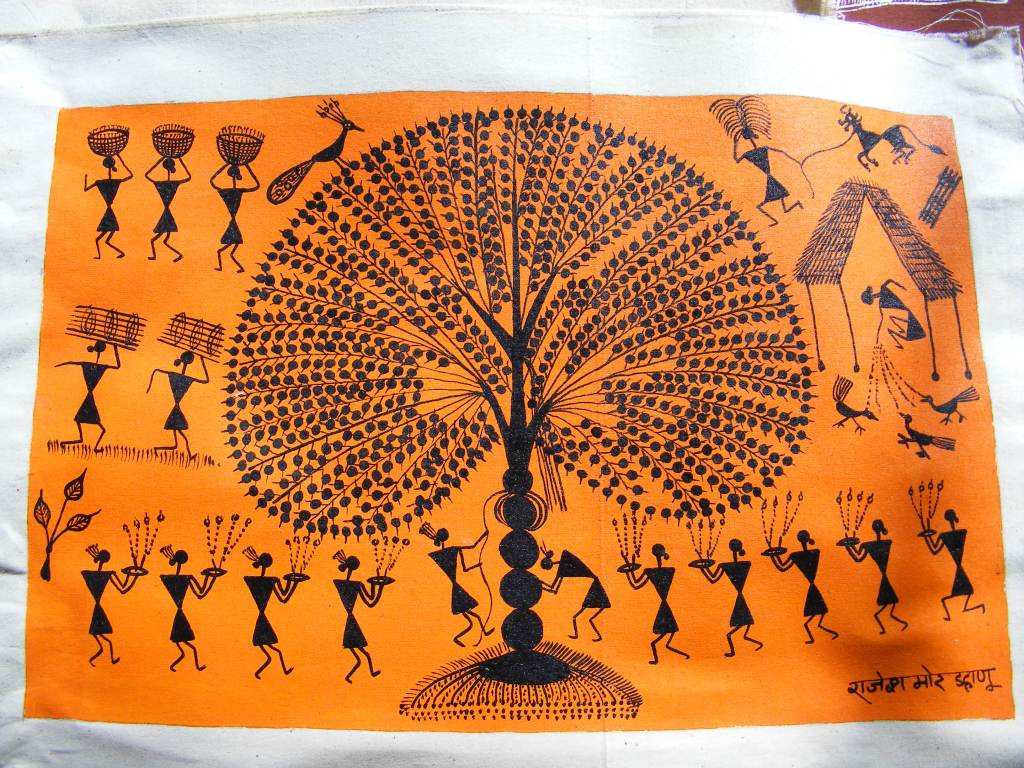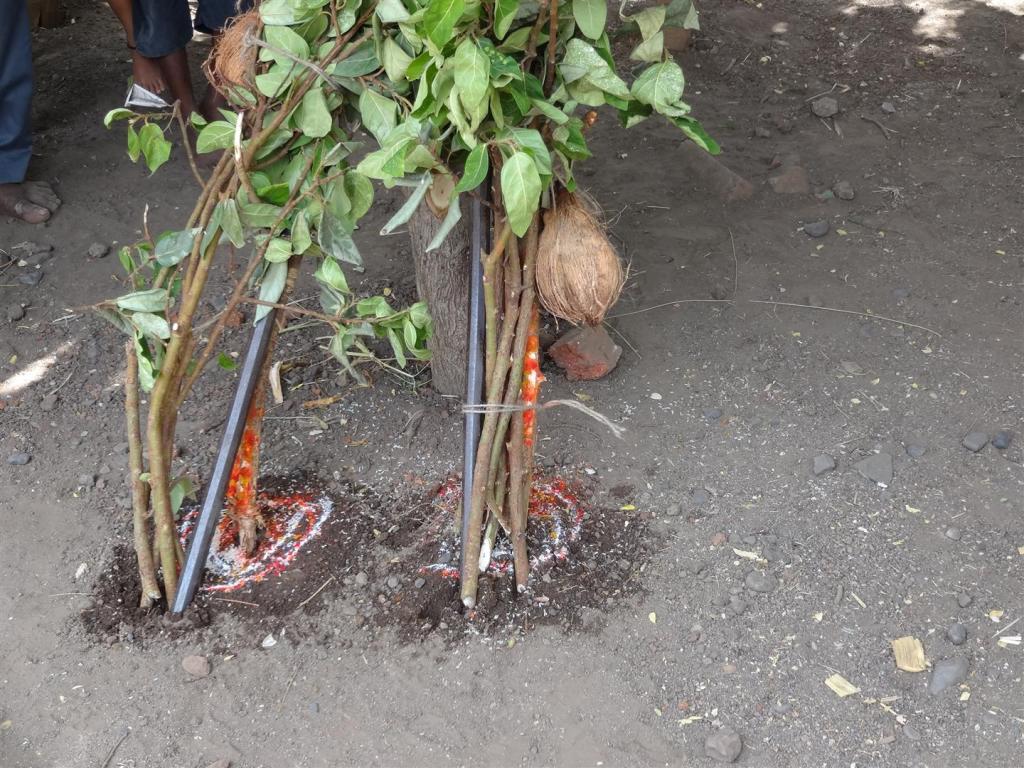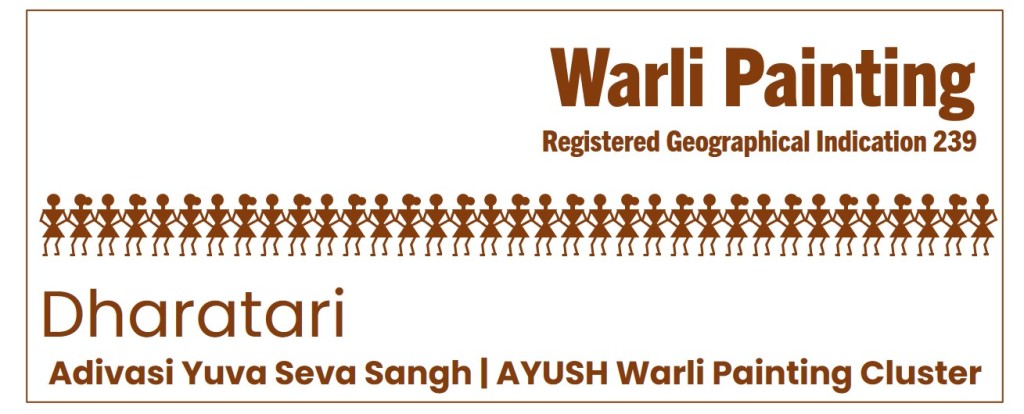
The beautiful lady was panting for breath. Drops of sweat were seen on her forehead and she was looking scared, for life. In another part of the same forest a dashing young man, Karam was running speedily while crying aloud, Reshma.. Reshma.. Kahaan ho tum, Reshma (Reshma, where are you)… Little Girdhari and Bulluji were watching a Hindi movie in Picture Palace. Reshma was sitting hunched, eyes closed with her face covered with her colourful Dupatta (stole). The music was reaching crescendo. Just then five men with spears arrived and surrounded Reshma. All the five dark skinned men had their faces painted, feathers tucked inside their bandanas and dressed only in skirts made of leaves. On the screen, loud background score of humba, humba… humba, humba was going maniacally to crack little Girdhari’s soft skull. Reshma jumped up to escape when she was pinned down by these two forest dwellers. One spear’s tip was touching her shoulder. She cried aloud, Bhagwaan ke liye mujh pe reham karo (By God, have pity on me)… Zoooooob….. The power went off and the movie screen went blank… Girdhari asked Bulluji, ye log kaun hain aur Reshma aunty ko kahaan le jaa rahe hain (who are these people and where are they taking Reshma aunty to) ? A sheepish Bulluji replied, ye log Adivasi hain aur Reshma ko Karam se milwaane le jaa rahe hain (these are tribals, taking Reshma to meet Karam)… Girdhari started thinking, who were these tribals ? And why were they depicted in movie after movie in the same cliched vein ? Years later the answers were discovered when Maverick Yogi visited a tribal village, Waghadi amidst the forests and hills of Palghar in Maharashtra.

Waghadi Factually : Waghadi village in Dahanu block is at the western foothills of Sahyadri in Maharashtra’s Palghar district. This village of 1800 people has a mixed population of MALHAR-KOLI tribe and WARLI tribe. Waghadi’s literacy rate is 60% with Surya Nagar High School in its centre. Dahanu Beach is 26 kilo metres and Mumbai is 113 kilo metres away from Waghadi.

AYUSH = Tribal Upliftment : Sachin Bachhu Satvi, Founder President, AYUSH puts things into real perspective. Sachin explains that AYUSH (Adivasi Yuva Shakti) was founded to harness the youth energy, in order to create more social awareness activities within tribal community. We are incorporating themes as varied as global warming, pollution, hygiene, technolgy advancement, woman rights in our Warli paintings. To obtain Warli Painting Geographical Indication registration (GI Tag) for IPR (Intellectual Property Rights), we found the whole process quite cumbersome. After a hard and learning struggle, we finally got GI tag in 2014. AYUSH is trying to make alternative livelihood sustainable through our forest produce, medicinal plants and agriculture produce. And in the process, we can arrest our villagers’ migration to cities, in search of livelihood, fingers crossed !

USP of Palghar Dahanu Tribals : Their festivals are not celebrated according to the dates on the calendar ! They have lots of freedom and flexibility here. Depending on the change in season, completion of farming activities, crisis in a family or problems of leave in office jobs can postpone or prepone the agreed festival celebration date. Another important feature is the presence of bonafide internal mechanism to solve and resolve disputes. In cities, arguments and disputes end up at authorities and lawyers’ desks. In this tribal community, justice delivery system comprising of village elders is swift, transparent and agreeable to both the parties.

Kansari (God of Foods) : Worship for this community means giving respect to natural elements which impact their day to day lives. Any wonders, the process of cooking food is prayed and worshipped as Kansari (God of Foods) !
Dhartari (Mother Earth) : To offer gratitude to mother earth which gives them grains, fruits and roots, they worship Dhartari (mother earth).
Gaaontari (Mother Village) : The place (village) where people live peacefully is worshipped as Gaaontari (mother village).

Berya – Muthi : Berya is done here during Deewali period; same as Laxmi pujan in Hindu homes. And Muthi is done during gavar chalavane as symbolic painting on wall, kitchen and floor.
Bhagat (Traditional Healer) : In earlier times, this tribal community used to wander, in search of forest produce, hunting and herbs. So to take care of snakebites, accidents and bone fractures, experienced people trained themselves as Bhagats by trial and error method. A Bhagat (traditional healer) treats sick people, guides and mentors new talents for this job and also conducts community pooja (worship rituals), for free !
Toran (Village Entry Gate) : In case of a disease engulfing a village, the Bhagat makes Toran (a symbol through Warli painting) at that village’s entry point. In one word, Toran is that village’s current health status !

Baaras (Match-Making get together) : Each young woman and man is allowed to choose her/his life partner in this community ! On Mahalaxmi mountain, Baaras (match-making get together) event is celebrated by single men and women. They dance together and find their partners, socially.

Taarpa (Famous Tribal Dance Form) : Around Deewali time, after the agricultural activities come to a standstill, Taarpa (famous tribal dance form) dance takes place. One or two communities or villages participate in this dance.
Dear reader, this tribal community eagerly promotes rehabilitation of divorced couples, widows (Dhavlari) and widowers.
Dhavlari (Tribal Widow) : A tribal widow, known locally as Dhavlari, completes the wedding event from start to finish !
Savaasin (Tribal Old Woman) : The Lagna Chauk seen in Warli paintings is made by Savaasin (tribal old woman) at marriage venue.
Lagn (Marriage) : Lagn (wedding) event continues for five days. And each day of this event is named aptly. Have a look below.

Paapdya (Day 1) : Rice is eaten thrice a day (breakfast, lunch and dinner) in this community. Rice Paapad is made from rice. Paapdya is the name of the first day of Lagn (wedding) event.
Umbarmedh (Day 2) : On second day of Lagn, twig of Umbar tree is worshipped. So this day is called Umbarmedh.

Mandav (Day 3) : Third day of Lagn, Mandav is readied for the event. So this day is called Mandav.

Halad (Day 4) : Fourth day of Lagn, Halad ceremony is performed. This day is called Halad.

Lagn (Day 5) : Fifth day of Lagn is the last and final day of Lagn !
Panch (Five Wedding Supervisors) : This tribal community’s five senior experienced men, act as Panch, on Lagn day. They explain married life’s responsibilities to the bridegroom and the bride.
Dej (Reverse Dowry System) : Dowry is not part of the Lagn event in this community. But Ladkewaale (bridegroom’s family) present rice and vegetables to Ladkiwaale (bride’s family) ! This ceremony, performed 2-3 days after Lagn, is called Dej.
Rice and Fish Curry is their staple food. But during feasts, Murga (chicken), Daal (lentils), Bhaaji (various vegetable curries), rice based sweets, Taadi (toddy) and Mohu (Mahua flower drink) is served to the guests.
Soyin (Tribal Midwife) : During childbirth, Soyin (tribal midwife) plays a very important role. In every village, or in 2-3 villages, there is a midwife. A trained and experienced professional, Soyin begins her job, by taking complete care, of a pregnant woman. She does the maalish (massage) of the pregnant woman, takes her full care, guides her pregnancy period’s food, nourishment requirements, helps deliver the baby and most importantly, takes full care of the newborn, phew ! Nearby hospitals consult Soyin and invite her to train their own professionals !

Satichi Pooja (Chhatthi in Hindi) : On third or fourth day of the childbirth, the baby’s arrival is celebrated, to welcome the newborn, in tribal community. No surprises here, dear reader, Soyin conducts Satichi Pooja. A picture is made to depict this puja in Warli Painting.

Aatmnirbhar Kisaan (Self sufficient Farmers) : 10 years back, except clothes and salt, the farmers in tribal community used to grow everything in their farms. Rice, Udid Dal, Moong Daal, Toor Daal, Watana, Kaad Dhaanya, Mango, Phanas (Jackfruit), Kaaju, Cheeku, Sapota, Honey, Custard Apple, Khajari (Date) was grown in farms and backyards. People in these areas also consume Bamboo flowers and Bamboo roots as pickle, throughout the year. Dink (juice of a tree) is used as adhesive while Ambadi (Tamarind leaves) paste is used in cooking fish curry.

Trees are Family : Famous Warli Painting artist, Sanjay Parhad says about his community’s bonding with trees and forests. Sanjay says, we don’t touch any tree after sunset. Like us humans, trees too rest in the nights ! Everybody in our community, keeps his or her place clean, so as not to invite the wrath of Van–Devi (forest deity). If anybody cuts a tree for household use then, in lieu, he has to plant three saplings !

Contact Details of AYUSH (Adivasi Yuva Shakti) :
Website : http://www.adiyuva.in
E-Mail : ayush@adiyuva.in
Twitter Link : @adiyuva
Contact Number : +91 9246361249
Facebook Link : https://www.facebook.com/adiyuva
LinkedIn Link : linkedin.com/in/adiyuva
Tribal community does not believe in ‘religion’, the way the rest of the world does. For them, nature is religion and natural elements, their deities. Let yourself loose in nature to find your real self. Dear reader, that is the real one to one connect, that people should have with nature, and find bliss !

